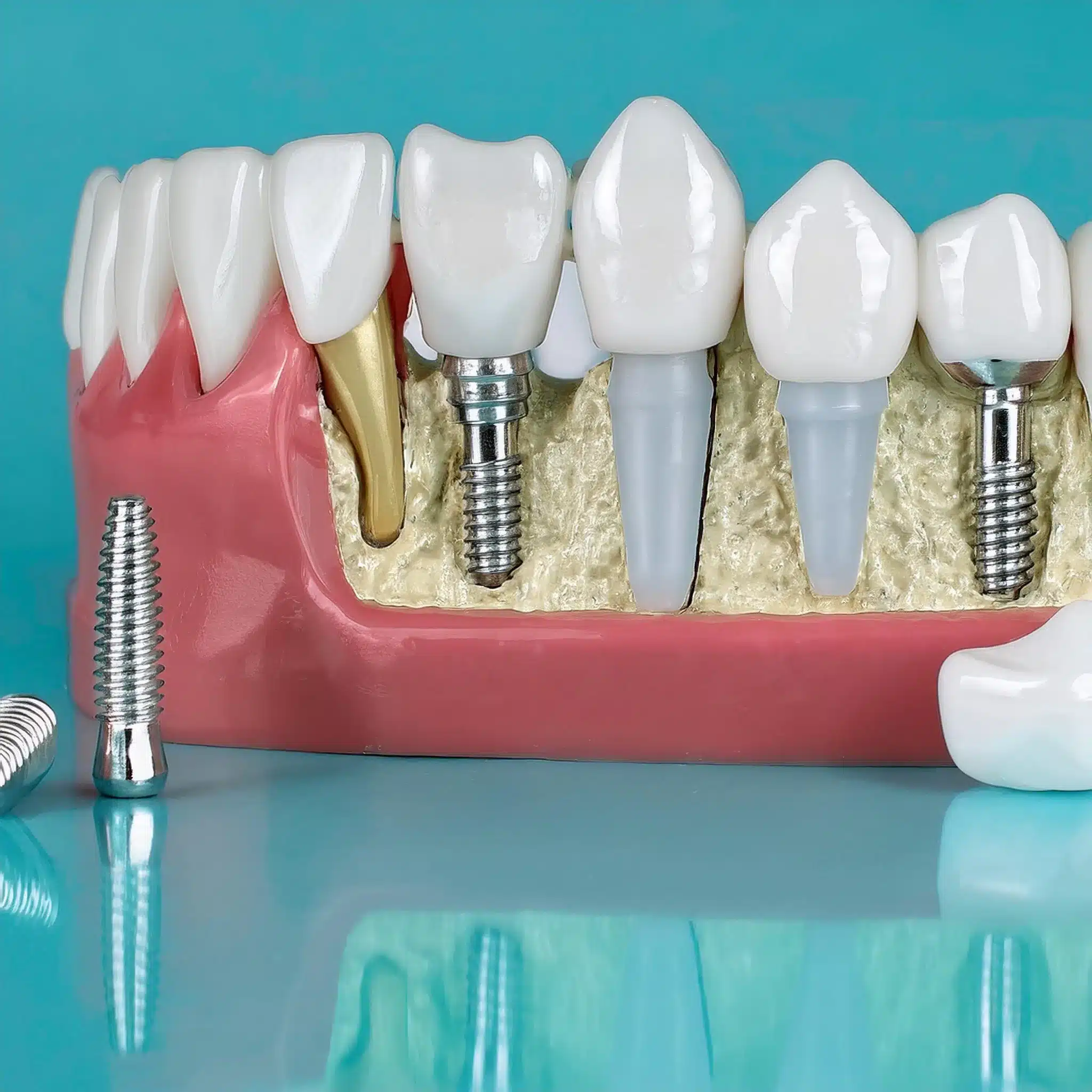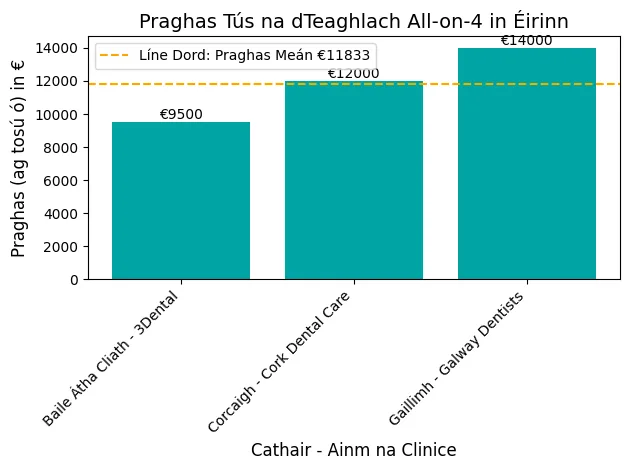Delayed-loading dental implants are a hot topic for many patients looking for a reliable and long-lasting solution for tooth replacement.
But the decision between immediate and delayed loading leaves patients wondering what’s best for them and what are the success rates, treatment times, and risks involved.
What is Delayed Loading in Dental Implants?
Delayed loading in dental implants is a strategic approach to implant placement, allowing for enhanced osteointegration and success. This method typically requires a 3-6 month healing period, minimizing vertical or lateral forces during the healing phase. It reduces the risk of implant failure, particularly in patients with compromised bone quality, and costs between €2,000 to €4,000 in Europe.

Immediate Vs Delayed Loading Dental Implants
Key Differences Immediate and delayed loading dental implants are two different approaches, each with its own benefits and considerations.
Benefits of Delayed Loading
Delayed implant loading allows for a healing period of 3-6 months, which can enhance osseointegration and stability (1).
This reduces the risk of implant failure, especially in patients with compromised bone or those who need bone grafting.
Studies have shown that delayed loading has lower implant complications, especially in complex cases (2).
Advantages of Immediate Loading
Immediate loading has the advantage of reduced treatment time; patients can get functional and aesthetic restoration almost immediately (3).
This is good for those who want quick results and minimal downtime.
Research shows that immediate loading can have same success rate as delayed loading if patient has sufficient bone density and good oral health (4).
But we need to consider occlusion and wear pattern to minimize the risk of implant failure (5).

Factors to Consider Between Immediate and Delayed Loading
Deciding between immediate and delayed loading dental implants after implant surgery involves several key factors that can affect the outcome.
Patient’s Oral Health and Hygiene
Patient’s oral health, especially in cases of missing teeth, is a big factor in determining the loading strategy.
Patients with good oral hygiene and no history of periodontal disease can go for immediate loading (1).
Those with compromised oral health can benefit more from delayed loading, which allows time for healing and reduces the risk of infection or implant failure (2).
Bone Quality and Density
Bone quality and density are big factors in choosing between immediate and delayed loading.
Immediate loading requires sufficient bone density to support the implant (3).
In cases where bone quality is suboptimal, delayed loading can provide time for bone grafting or other preparatory procedures to enhance implant success (4).
Aesthetic Considerations
Aesthetics is a big concern for many patients.
Immediate loading can provide quicker restoration of aesthetics, which is good for implants in the anterior region where aesthetics is key (5).
But achieving the desired aesthetic result requires careful planning and assessment of the patient’s soft tissue profile and smile line (6).
| Factor | Impact on Immediate Loading | Impact on Delayed Loading |
|---|---|---|
| Patient’s Oral Health and Hygiene | Requires excellent oral hygiene and no history of periodontal disease for success (1). | Allows time for healing, reducing risk of infection or implant failure in compromised oral health (2). |
| Bone Quality and Density | Needs sufficient bone density for implant stability (3). | Provides time for bone grafting or preparatory procedures when bone quality is suboptimal (4). |
| Aesthetic Considerations | Offers quicker restoration of aesthetics, beneficial for anterior region implants (5). | May require careful planning for desired aesthetic results (6). |
The Process of Delayed Loading Dental Implants
The Process of Delayed Loading Dental Implants Understanding delayed loading of dental implants involves several stages that patients should know about.
Initial Healing Phase
The initial healing phase is critical for delayed loading of implants.
During this phase, which is usually 3-6 months, the implant site is allowed to heal without any functional load (1).
This phase is important to minimize complications and to ensure the implant integrates well with the surrounding bone.
Studies have shown that allowing this healing time can reduce the risk of implant failure, especially in patients with compromised bones (2).

Osseointegration Period
Osseointegration is the process of the implant becoming firmly attached to the jawbone.
This period is important for long-term stability of the implant.
Research shows that osseointegration can be achieved within 3-6 months depending on patient’s individual factors, such as bone density and overall health (3).
No mechanical stress during this period allows for optimal bone growth and implant stability, which is important for the longevity of the dental implant (4).
Prosthetic Placement
After osseointegration, the final stage is the placement of the prosthetic crown.
This involves attaching the crown to the implant and restoring function and aesthetics.
The timing of prosthetic placement is carefully planned to ensure the implant can support the load without compromising its stability (5).
This is the final stage of delayed loading; patients will have a durable and natural-looking tooth replacement.

Risks and Challenges
Implant Failure
One of the biggest risk with delayed loading is implant failure.
Although the extended healing period is designed to enhance osseointegration, patient’s health, bone quality and post-operative care can affect the outcome.
Research shows that delayed loading can have a failure rate of 5-10% in patients with underlying health issues or poor bone (1).
Healing Process
The healing process in delayed loading can be affected by several factors, including the patient’s overall health and lifestyle.
Smoking for example, can delay healing and increase complications (2).
The extended period before loading the implant can also cause patient dissatisfaction due to the prolonged treatment time.
Patients must understand the importance of this phase and adhere to recommended care protocol for successful outcome.

Conclusion & Key-Takeaways
Key-Takeaways:
Delayed Loading: Delayed loading of dental implants allows for a healing period that enhances osseointegration and reduces implant failure, especially in patients with compromised bones (1).
Immediate Loading: Immediate loading has quicker restoration and a similar success rate when patient condition is optimal, sufficient bone density, and good oral hygiene (2).
Patient Specific: The choice between immediate and delayed loading should consider the patient’s individual factors, such as oral health, bone quality, and aesthetic needs, for a successful outcome (3).
Conclusion:
Now that you know the difference between immediate and delayed loading of dental implants, you can make an informed decision for yourself.
By considering your oral health and bone quality, you can have functional and aesthetic success with your dental implants.

FAQ
References
Babayi M, Ashtiani MN, Emamian A, et al. Peri-implant cell differentiation in delayed and immediately-loaded dental implant: A mechanobiological simulation. J Theor Biol. 2023;515:110637.
Article: Peri-implant cell differentiation in delayed and immediately-loaded dental implant: A mechanobiological simulation
Nkenke E, Lehner B, Weinzierl K, et al. Bone contact, growth, and density around immediately loaded implants in the mandible of mini pigs. Clin Oral Implants Res. 2003;14(3):312-321.
Article: Bone contact, growth, and density around immediately loaded implants in the mandible of mini pigs
Kinaia BM, Kazerani S, Korkis S, et al. Effect of guided bone regeneration on immediately placed implants: Meta‐analyses with at least 12 months follow up after functional loading. J Periodontol. 2019.
Article: Effect of guided bone regeneration on immediately placed implants: Meta‐analyses with at least 12 months follow up after functional loading
Porter JA, von Fraunhofer JA. Success or failure of dental implants? A literature review with treatment considerations. Gen Dent. 2005;53(6):423-432.
Article: Success or failure of dental implants? A literature review with treatment considerations
Chang YL, Lew D, Park JB, et al. Biomechanical and morphometric analysis of hydroxyapatite-coated implants with varying crystallinity. J Oral Maxillofac Surg. 1999;57(9):1096-1108.
Article: Biomechanical and morphometric analysis of hydroxyapatite-coated implants with varying crystallinity
Delayed versus Immediate Loading of Implants: Survival Analysis and Risk Factors for Dental Implant Failure. J Oral Maxillofac Surg. 2023.
Article: Delayed versus Immediate Loading of Implants: Survival Analysis and Risk Factors for Dental Implant Failure



